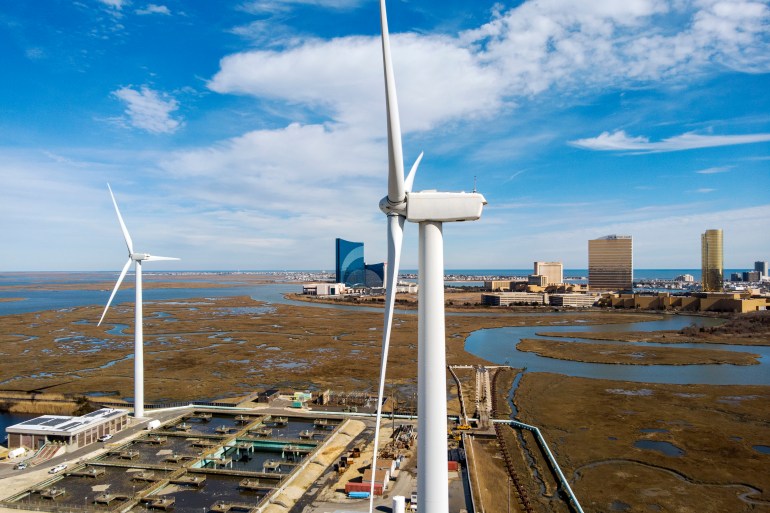Biden administration announces plan to expand wind power
The White House said the plan would create more than 44,000 jobs and employ nearly 33,000 in offshore wind activity.

The White House has announced plans to expand offshore wind energy in the coming decade by opening new areas to development, speeding environmental permitting, and boosting public financing for projects.
The plan is part of President Joe Biden’s broader effort to rapidly transition the US economy to net zero greenhouse gas emissions to fight climate change.
Keep reading
list of 3 itemsBiden says Xi, Putin welcome at White House climate summit
Biden administration faces pressure on immigration amid influx
“President Biden believes we have an enormous opportunity in front of us to not only address the threats of climate change, but use it as a chance to create millions of good-paying, union jobs that will fuel America’s economic recovery, rebuild the middle class, and make sure we bounce back from the crises we face,” Gina McCarthy, national climate adviser, said in a statement on Monday.
“Nowhere is the scale of that opportunity clearer than for offshore wind,” she said.

The plan would create jobs for more than 44,000 workers and employ nearly 33,000 in offshore wind activity, according to the White House. The effort would also help avoid 78 million metric tonnes of carbon dioxide emissions per year, a key step in the administration’s fight to slow global warming.
The agenda, however, is a politically controversial one that Republicans say could bring economic ruin. Democrats say it can create jobs while protecting the environment.
Secretary of Interior Deb Haaland, the first Indigenous person to serve as a cabinet secretary, said it is important to confront climate issues, as its fallout disproportionately affects people of colour and low-income communities.
“As our country faces the interlocking challenges of a global pandemic, economic downturn, racial injustice, and the climate crisis – we have to transition to a brighter future for everyone,” Haaland said according to a White House fact sheet.
The plan sets a target to deploy 30 gigawatts (GW) of offshore wind energy by 2030, which the administration said would be enough to power 10 million homes and cut 78 million metric tonnes of carbon dioxide per year while creating jobs in construction, development, and steel-making.

The administration said it will also aim to prioritise environmental permitting and provide billions of dollars in public financing for offshore wind projects.
The United States currently has just two small offshore wind farms, the 30 megawatt Block Island Wind Farm off Rhode Island and a two-turbine pilot project off the coast of Virginia. There are more than 20GW of proposed projects in various stages of development.
Biden’s approach marks a sharp turnaround from the Trump administration, which stymied wind power both onshore and in the ocean.
As president, Donald Trump frequently derided wind power as an expensive, bird-slaughtering way to make electricity, and his administration resisted or opposed wind projects nationwide.